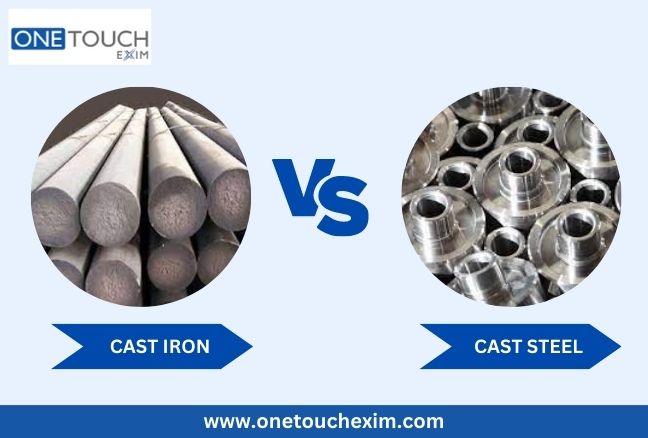High-carbon cast iron is brittle, has good heat retention properties and good machinability, but it is prone to rust. Steel with less carbon (2 percent or with less than 2 percent carbon) is denser, stronger, more elastic and less malleable. Although it is more expensive to cast complex metal shapes, steel is stronger and more resistant to impact. Use iron for things like engine blocks and cookware, not tools, structures and high stress parts.
What is Cast Iron?
Cast iron is essentially a 2-4% carbon with iron/containing/silicon and other ferrous alloy. Being high in carbon content, it becomes brittle with little ductility and low tensile strength. Its excellent heat retention is well suited for warming. Its castability makes complex shapes for casting possible. It’s also used for engine blocks, pipes and cookware and its primary disadvantages are its brittleness and the fact that it must be seasoned or coated to prevent rust.
What is Steel?
Steel is a metallic alloy that consists of iron and carbon with a low amount of carbon in it. This reduced carbon content (and the presence of lesser amounts of other allotting material such as manganese, silicon, and phosphorus) makes steel stronger, tougher, and more ductile than cast iron. It is so adaptable it can be hardened, rolled and welded into an endless variety of shapes. Steel as the most important engineering material in the world, the application extends from the construction, machinery, vehicles and tools owing to its high strength/cost and its good corrosion resistance.
Difference Between Iron and Steel
The only difference is the quantity of carbon, Iron is 2-4% carbon, so hard and brittle that castability and heat retention are great. Steel (with 0.2-2% carbon) lies between those two extremes where a balance between strength and ductility is a good goal. It is substantially stronger, more impact-resistant and can be welded and heat-treated. Though iron is less expensive to cast into complex shapes like engine blocks, steel becomes stronger when shaped into structures, tools and machinery.
Advantages and Disadvantages of Cast Iron
Advantages – Cast iron has high compression strength, heat retention and vibration damping. It is easily cast and is relatively cheap because of the low melting point and the low levels of alloying. These characteristics make it perfect for automotive block and heads, metal machine tools, and for cookware.
Disadvantages – Due to a high carbon content it’s low tensile strength with poor impact resistance. It’s also heavy and if you don’t maintain it with seasoning or coatings it is really rusty.
Advantages and Disadvantages of Steel
Advantages – Steel has excellent tensile (tensile strength) form and toughness. It is very workable for the manufacture, 100% recyclable, and crucial for building tools and vehicles due to its strength and ability to endure stress.
Disadvantages – Main disadvantages are that it can rust when not coated, the relatively expensive energy requirements for production and its weight compared to newer, lighter materials such as aluminium or composites.
Cast Iron Vs Steel: Which One to Choose?
The decision of which to use cast iron vs steel will depend upon your application. Choose cast iron when your application requires : Ideal heat retention (such as with cookware like pots and pans or griddles) Excellent vibration damping Cost effective, complex shapes (such as in manifolds and hydraulic components) and remember to keep in mind that you can add carbon equivalent and other elements to cast iron must like you can with steel to give cast iron higher wear resistance or other properties.
On the other side for applications requiring high tensile strength, impact, and ductility, steel is the obvious choice. Its weldability, formability, and heat treatability are all good and it finds an important place in dynamic load structures such as bridges and buildings, tools and high speed machinery. Some grades require coatings to prevent corrosion and initial cost is higher but it is the unmatched strength and flexibility of steel that serves as the backbone of modern engineering in situations where failure is never an option.
Machining Cast Iron and Steel Products
Cast Iron is easier to machine with its graphite content allowing for built in lubrication, producing good cheap break tack and shorter broken chips. But it’s abrasive and can wear down tools. It is harder to machine the steel and it will create long chips, which must be broken and need a good cooling. Steel demands for higher cutting faces and need of certain tool geometry to cope with its tough life and to obtain good surface finish. Both require correct tool selection for results.
Beyond Cast Iron and Cast Steel
Outside of cast iron and cast steel, however, there is a wide world of ferrous alloys. Stainless Steel, which contains chromium, is resistant to corrosion and tool steel is extremely hard to supply straight cuts. Alloys join these steel with minerals such as nickel or chromium to increase its strength and resistance to wear and tear. Specially grades of steel include wear resistant abrasion-resistant plate, electric steels used in the production of power transformers and advanced high strength steels used in the automotive industry for stronger, lighter vehicles.
Conclusion
In the end whether to use cast iron or steel is application dependent. Cast iron is particularly good in compression, damping and in fabrication of complex castings. Steel is stronger, more shock resistant and more versatile. It’s important to know their unique characteristics-carbon concentration, brittleness and machinability – in order to find the right match for any engineering or design purpose.
